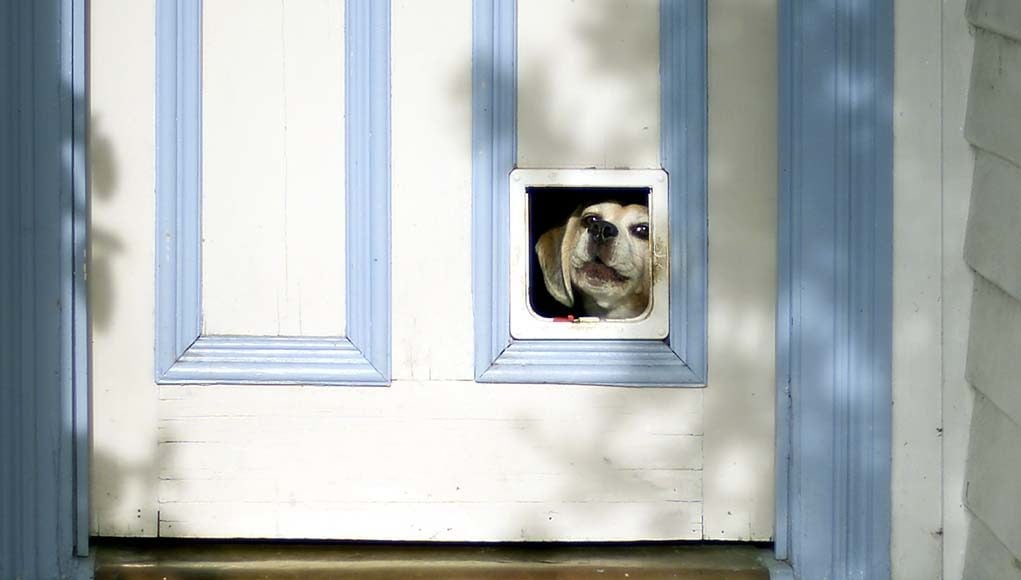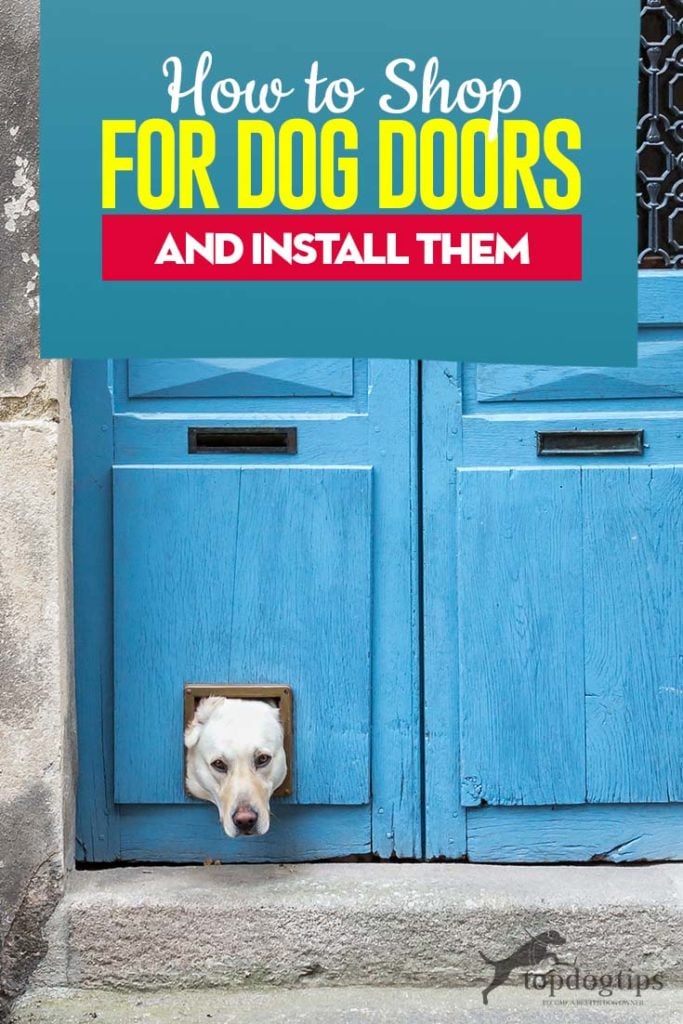Installing a dog door in your home can be a life saver for both you and your dog. Dog doors are in particular very useful in circumstances where you work long hours and wish to allow your pet to go out for potty breaks whenever they need to. That said, shopping for good dog doors should be done carefully, and there are several things to consider.
Table of Contents
Where Do You Live?
It’s always a great relief to know that your dog can still use the bathroom and stretch their legs without a struggle. However, some circumstances make installing a dog door more problematic.
For example, you will need to consider what's the weather like where you live. Weather can be an issue if you live in a state where a lot of snow and heavy rain are prevalent. Bad storm can cause a problem when you have a dog door installed, but there's more than that.
States like North Carolina, Washington, and Colorado are abundant with wildlife year round, so you will inevitably end up with a few uninvited guests. Since this is such a strong possibility, you may have to think about changing the furniture setup in your home and block off areas that you want to remain secure. Coyotes and alligators have even ended up crawling through pet doors to find food and shelter.
Fortunately, there's a way to avoid both of these issues, but that comes at a cost. More expensive dog doors will be weather-proof and have features that don't allow snow or rain get indoors. Other pet doors, particularly automatic dog doors, may have a pet microchip detector, meaning the dog door will only open for your pet with a microchip and nobody else.
Are There Small Children in The Home?
For dogs, getting in and out of your house is a pretty natural and regular part of their day. Small children are highly observant, so for them, a dog door is a fun, new, and exciting little adventure in their eyes, which can sometimes pose a problem. There have been reports of children injuring themselves when using pet doors.
To prevent your child from disappearing through their portal to Narnia, consider adding a lock or some kind of extra security on the dog door so they can’t open it on their own. Again, a more expensive automatic pet door with microchip detector may be better here.

Get the Right Measurements for Your Dog Door
Knowing the appropriate measurements for your dog door is paramount. Larger dogs especially can get stuck, and seriously injure themselves if their pet door is too small.
The recommended height for any dog door is at least 2 to 3 inches above the top of a dog's back. You might also consider giving your pooch one more inch just for a little extra wiggle room.
The bottom of the pet door should also give about 3 inches of space from the ground for added safety of your dog.
The Best Dog Door Choices
The traditional design for a dog door is the flap. There is a plastic slot that slides back and forth so that you can close it off when you don’t want it open.
When the slot is open, the flap provides easy entry for your dog, while still closing off the open space to protect your home from debris.
Most pet door companies follow this same design, but you can choose one that has better insulation and different safety features (which come with a more expensive price tag). Look for pet door brands that offer replacement flaps and warranty options. Since your dog door flap is going to experience regular daily use, it’s going to wear out at some point and you’ll eventually need to replace it.
Here are some of the best dog doors in different price categories that we like:
| Preview | Product | Rating | |
|---|---|---|---|

|
Endura Flap Pet Door for Walls in White |... | 770 Reviews | Check Price |

|
SureFlap-Sure Petcare Microchip Pet Door (White) | 4,919 Reviews | Check Price |

|
PetSafe 1-Piece Sliding Glass Pet Door for Dogs &... | 6,959 Reviews | Check Price |

|
PlexiDor Performance Pet Doors for Dogs and Cats -... | 77 Reviews | Check Price |

|
PetSafe NEVER RUST Wall Entry Pet Door -... | 4,252 Reviews | Check Price |
Dog Door Installation and Different Door Types
It’s not a terribly difficult thing to do, but the devil is in the details when it comes to installing a dog door. When you’re making an additional entryway to your home, you’ll have to maintain it and make sure the edges remain sealed.
Dog doors are easiest to install within metal, fiberglass, and wooden exterior doorways. Some pet doors might be pre-designed for different types of house doors, such as screen doors or patio doors.
Now, this is where the hard part comes in, as you’ll need to take the exterior door off its hinges and lay it flat across a table or another surface that allows for a gap in the center. You’ll need this extra space in the middle so that you can cut through the portion with the dog door without a struggle.
Once you’ve completed the cut, there should be two sides to the frame of the dog door. You’ll push them into the new slot on either side, making sure they fit together tightly. Then, you’ll need to drill in screws to keep the pet door securely in place.
Dog Doors Aren’t Cheap or Easy to Install
If you don’t feel comfortable installing a dog door yourself, you can always hire someone to install it for you. It costs about $200 to $350 to install one into an exterior door on average, but the price can go all the way up to $400 to $1600, depending on where the dog door is installed.
Be sure you’re ready front the cost of installment before you buy all the materials. See our video review of PetSafe doors for more details on what to consider when shopping around and how to install a pet door correctly.
While it's significantly cheaper to install a dog door yourself, it’s probably better to hire someone who has the right tools and experience. That way you don't risk destroying your own house door. The last thing you want is to start tearing into a wall when you don’t know what you’re doing.

Your Dog Might Not Understand What It’s For
Initially, your pet might be confused or uninterested in their new personal door, but you can help them learn how to use it, just as you do it with stairs.
Start by leaving the pet door open and stick your hand through it. Allow your pooch to see that it’s wide and accessible enough for them to fit through.
Go through your exterior doorway and shut it. Stick your hand through the flap again from the outside and encourage your dog to come outside with you. Use a treat if necessary for added incentive.
If you have a large breed dog and you bought a wide flap dog door, you might even be able to slide through it yourself and give your pet a visual example.
Stay Calm and Patient
 Don’t get frustrated or try to force your dog to use the door; this will only further their fear and misunderstanding. This new installment needs to be a positive experience for your pet right off the bat. If you make it more traumatic than it already is, your dog may not ever get comfortable with using a pet door.
Don’t get frustrated or try to force your dog to use the door; this will only further their fear and misunderstanding. This new installment needs to be a positive experience for your pet right off the bat. If you make it more traumatic than it already is, your dog may not ever get comfortable with using a pet door.
Take every possible opportunity available to help your pooch see this transition as a good thing. When it’s time to use the restroom or go for a walk, have the dog use their own pet door rather than the exterior. Practicing this over and over again will help dogs adjust to the idea that this is just a normal part of the day.
While it’s not usually a necessary step, you can always hire someone to train your pup on acclimating to their special exit. But remember that even the best trainer in the world won’t make a difference if you aren’t consistently working with your pup at home. All it takes is 10 to 15 minutes per day.
READ NEXT: Can You Install A Dog Door In A Sliding Glass Door?
Disclosure: We may earn affiliate commissions at no cost to you from the links on this page. This did not affect our assessment of products. Read more here and find full disclosure here.














